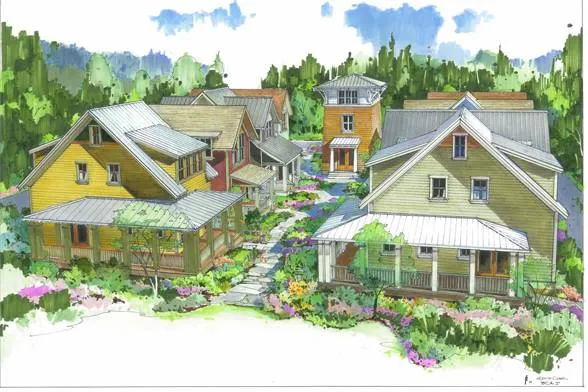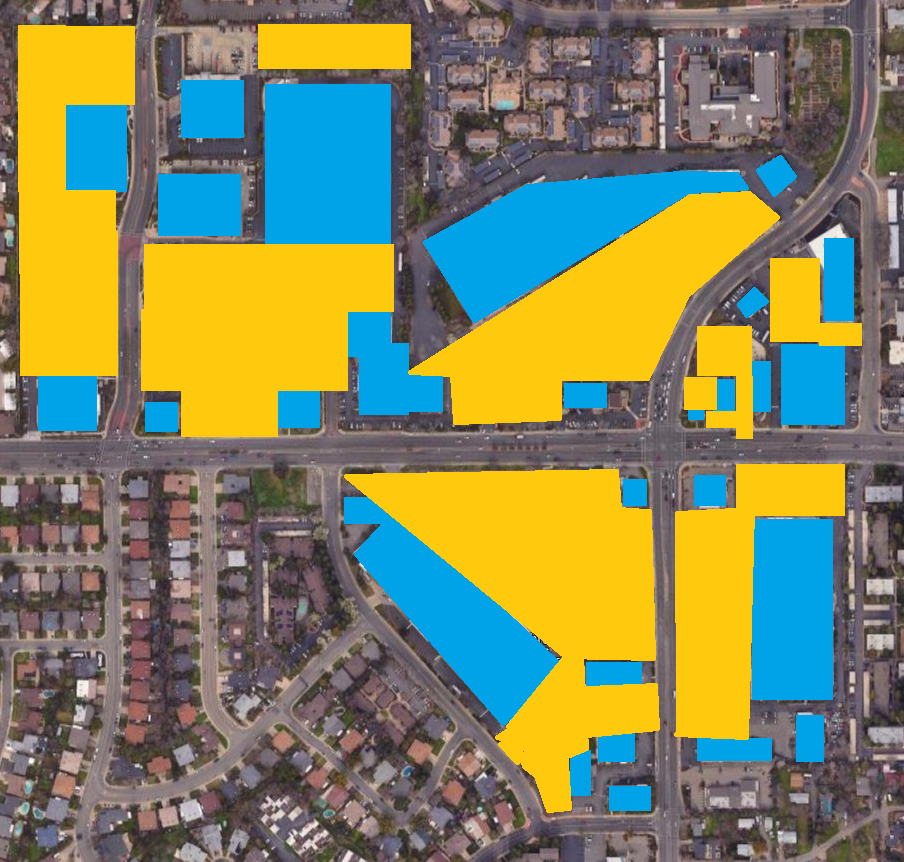Autonomous vehicles will improve urbanism
Autonomous Vehicles, or self-driving cars, are already making an impact. For example, Waymo is currently providing 100k paid rides a week and plans to expand to more cities, while Tesla is expected to unveil its Robotaxi on 10/10 2024. Other companies are also entering this market. It is very likely that by 2030 autonomous vehicles will be commonplace in every major metro area in the United States, if not in all metro areas. What will be the impact of autonomous vehicles on urbanism and daily life? I argue that urbanism will improve, along with everyone’s quality of life.
My argument can break down into these key points:
- Riding in autonomous vehicles will cost less than owning a car.
- The total number of cars on the road will decrease.
- The demand and need for personal garages and driveways will decrease.
- The demand and need for parking lots will decrease.
- Demand for mass transit will increase.
- Demand for walkable areas will increase.
- All people will have increased freedom.
Less expensive than owning a car
Currently, relying on ride-hailing services for all your transportation needs is prohibitively expensive because fares cover not only the vehicle’s cost but also the labor and the fleet-operator’s profit. For most people, it’s more economical to own a car and drive it themselves, avoiding the additional expenses tied to labor and fleet profits. However, the introduction of autonomous vehicles is set to change this equation.
With fleet-operated autonomous vehicles serving as taxis the cost per mile to ride an autonomous vehicle would be less than the cost per mile of driving a car you own. That would be possible because many fixed costs would decrease due to higher utilization.
| Cost | Robotaxis | Owned Car |
|---|---|---|
| Electricity | Not Shared | Not Shared |
| Parking | Shared | Not Shared |
| Insurance | Shared | Not Shared |
| Maintenance | Shared | Not Shared |
| Depreciation | Shared | Not Shared |
| Technology R&D | Shared | N/A 1 |
| Operations | Shared | N/A |
| Profit | Shared | N/A |
As we see, costs like depreciation, insurance, and maintenance are spread across more miles and more people, which lowers the cost-per-mile compared to owning a car. Although Robotaxis do add extra costs like operations and profit, I believe the savings will still outweigh these additional expenses.
Fewer cars on the road
The widespread adoption of Autonomous vehicles will lead to a reduction in the total number of cars on the road. This will be happen for two reason, the first as mentioned above is that riding an Autonomous vehicle will cost less than owning your own vehicle, or it will be very similar. Second, there will be additional convenience gains from not having to own a car:
- Less need for parking
- Less need for vehicle maintenance
- Only use car when needed
- Not needing to drive
There will always be some private car use, from need like trades work, or from preference, but the vast majority of the people will not fall into those two categories.
Less private parking and driveways
With the assumption of less private car ownership the first benefit to the urban landscape appears: less private parking and driveways. A family with no need to own a car has no need for a house with a garage or driveway. They will not disappear overnight, but eventually new developments will get built tailored to households with no cars.

Instead, there will be a rise in developments focused on more densely packed homes centered around shared yard spaces, or more private yard space due to the absence of driveways. The streets between houses could become narrow only accounting for pedestrians and cyclists.


Instead of each house being accessibly to a road directly there could be a shared parking lot with 0.5 parking spots per house (or even lower) and a drop-off/pick-up area where self-driving cars wait. People would walk a few minutes to this area to get picked up.
This change means more housing per square mile and better community integration as houses are closer and people walk past neighbors to get to the pick-up/drop-off area.
This also would change the economics of both single family houses and multi family houses. Garages are expensive, they can cost up to $25,000, a cost that is backed into the final price of a home. For multi-family developments less parking requirements is significantly less cost. Many urban apartments have underground garages that are expensive to build and maintain. These cost reductions means lower housing costs for families.
Less destination parking
An even bigger change for the urban landscape would be a decrease in destination parking; less commercial parking, less office parking, and less school parking. With most people driving their own private car there needs to be enough parking spots for near peak demand at every destination. Let us assume a person works at an office, after that goes to the gym, after that they go to buy some groceries and at the end they have date night with the spouse. For it all to work the office has enough parking for all their employees, the gym has enough parking for roughly the peak hours, same for the grocery store and the restaurant. That is a large amount of land, and it sits idle during the off-peak hours (which are most hours).

I took a Google Maps satellite view of a shopping center close to where I live, I highlighted in blue the buildings and yellow the parking spaces, I left the areas behind the buildings where trucks load and unload merchandise. Over half of the area is used for parking. And this is a fairly good utilization ratio (percentage of total area dedicated to parking) shopping center, there are others with a worse ratio.
With more adoption of self driving cars the yellow area can shrink significantly, maybe to even a quarter of the current size. This is because a Robotaxi will drop-off a customer near the entrance of the store and drive away to pick-up other customers. When the customer is done shopping they will order another car which will pick them up near the store entrance and drive them back home. The only time a car would need to park is if the customer drove a private car or the Robotaxi is using the parking space to wait for new pick-up requests.
Increased use of mass transit
A potentially unrealized benefit of self driving cars would be increased mass-transit use. This will be a double-edged sword. Local transit options, such as bus networks and light-rail, will experience a significant drop in ridership. However, intercity transit services like Amtrak and Brightline will see an increase in passengers. This is because self driving cars will fix the last mile problem of mass-transit. In transportation networks, “last mile” describes the rising marginal cost of getting people from a transportation hub such as an airport or train station to their final destination. A train route may exist between city A and city B, but within city A it is inconvenient to reach the train station, leading to the rider driving to the train station in city A. And when arrived at city B the rider has no way to get to their final destination so they must rent a car or order an expensive tax/Uber, leading to more costs. It would have been simpler to drive yourself.
Self driving cars fix this by making it easy and low cost to take a self driving car to the train station, ride the train to city B, and take another self driving car to your final destination. No need to own a car or rent a car. Robotaxi operators won’t allow their cars to drive between metro areas, due to increased complexities and costs that involves, so users will be encouraged to take partner services like Amtrak, or Brightline, or Megabus, etc when leaving a metro area to another.
Large hit to local public transit
Local public transit like the bus and light-rail network will see a large drop in riders because a Robotaxi will be much more convenient and not that much more expensive. Local transit agencies could still adapt by switching to smaller, more frequent, and also autonomous busses. Or transit agencies could have high frequency expressway corridors like light-rail and Bus Rapid Transit on dedicated lanes in bottleneck areas that Robotaxi riders can use for more quicker commute. Or transit agencies could subsidize or run their own non-profit Robotaxi networks to serve underprivileged communities.
Increase demand for walkable neighborhoods
All the arguments mentioned above would lead to an increase in walkable area demand. Now that people can have most of the conveniences of a car without any of the drawbacks of car ownership, and there are Fewer cars on the road, and there is less car-centric parking developments, we will witness a massive growth in walkable city lifestyles. People would be able to live in dense areas and simple order a Robotaxi if they need to go further than walking distance. This is possible now but Taxis and Uber with a human driver is too expensive so only a tiny few can afford to live like this. With Robotaxis most people will be able to live like this. Increasing everyone’s freedom and quality of life.
Summary
In summary, the widespread adoption of autonomous vehicles will significantly impact urban living and improve overall quality of life. As riding autonomous vehicles becomes cheaper than owning a car, fewer vehicles will be on the road, leading to less need for private parking and driveways. This will foster more densely packed housing developments with shared spaces and narrower streets. Additionally, the reduction in destination parking will free up urban land for other uses. While local transit options may see a decline, intercity transit will likely benefit as self-driving cars solve the last-mile problem. Ultimately, these changes will drive a demand for more walkable neighborhoods, enhancing community integration and increasing freedom for all.
Q&A
Here are some potential questions or arguments that I thought of. This section will be published empty or with little content and expand over time. If you wish to contact me please do so in my contact information in the footer.
Argument: Most people will want to own a car
Response: Even a modest decrease in car ownership, say a 25% decrease, will have a big impact on our urban environment. Plus, I do not believe most people want to own a car, most people simply want to travel by car and doing so without owning a car now (hire a Taxi/Uber) is too cost prohibitive.
-
This assumes the car owned does not have its own built-in self driving technology/system that you can enable at any moment. ↩